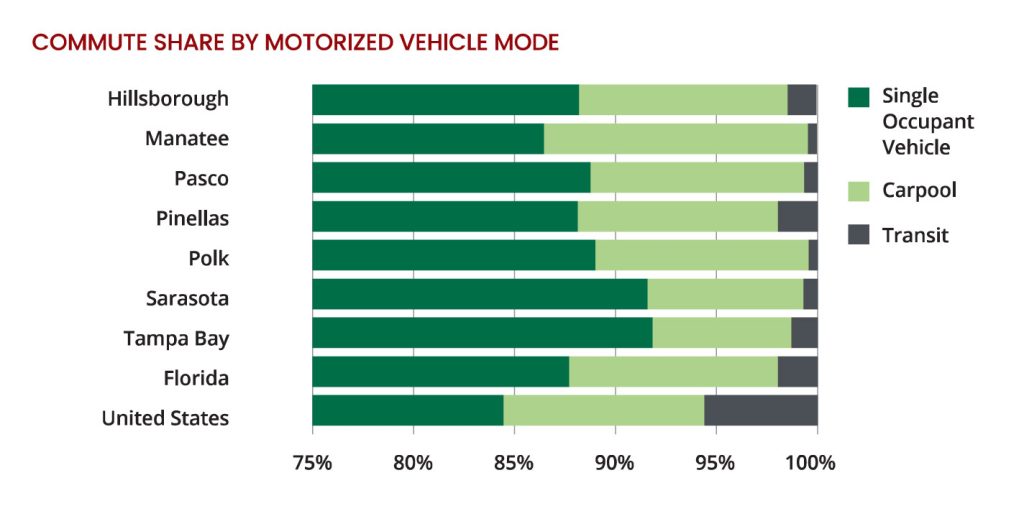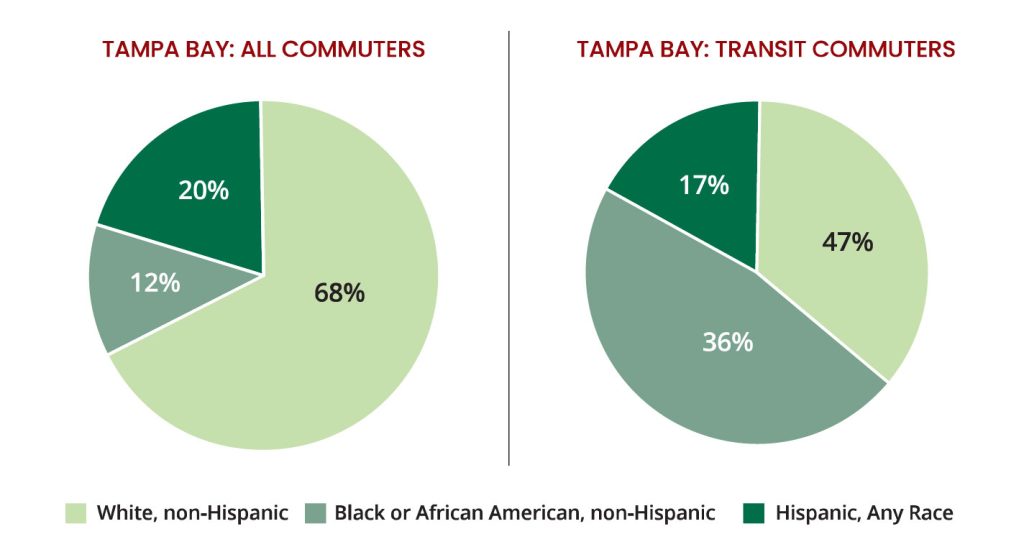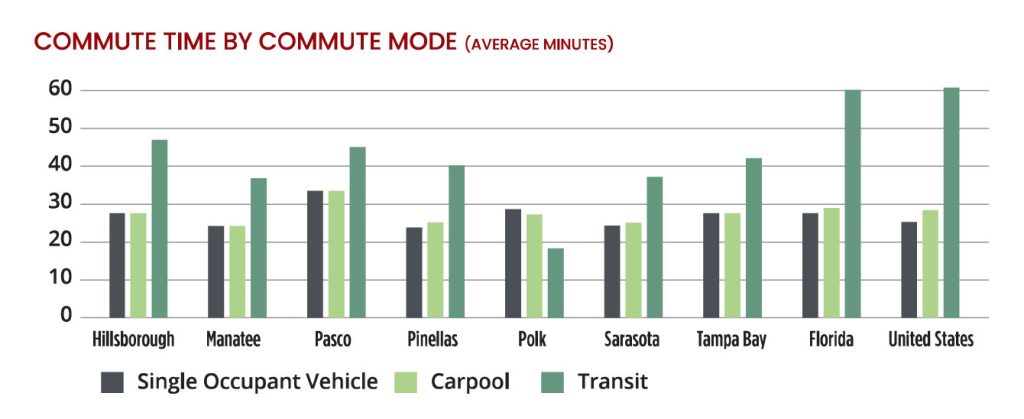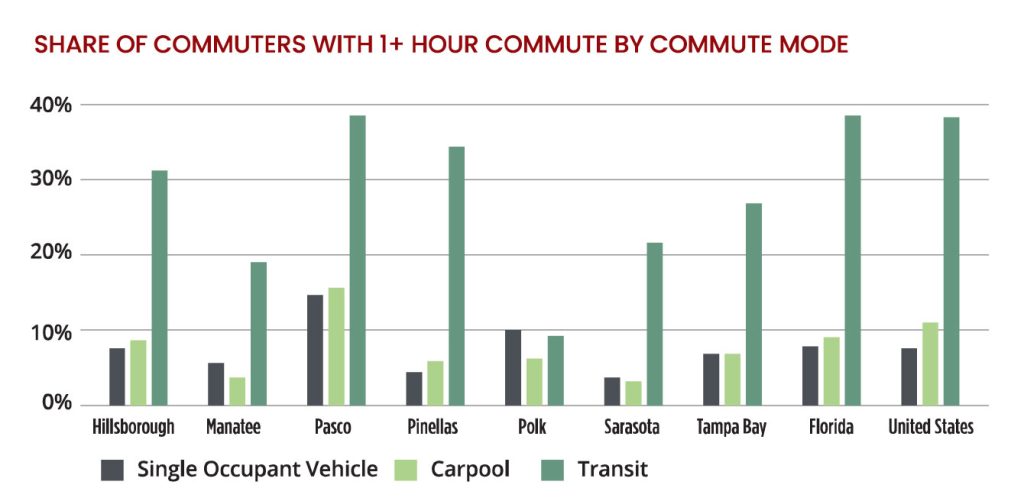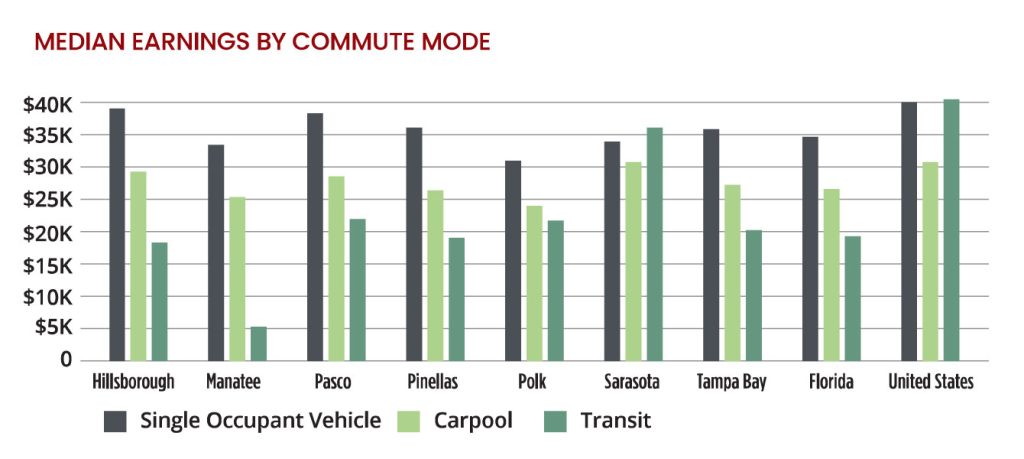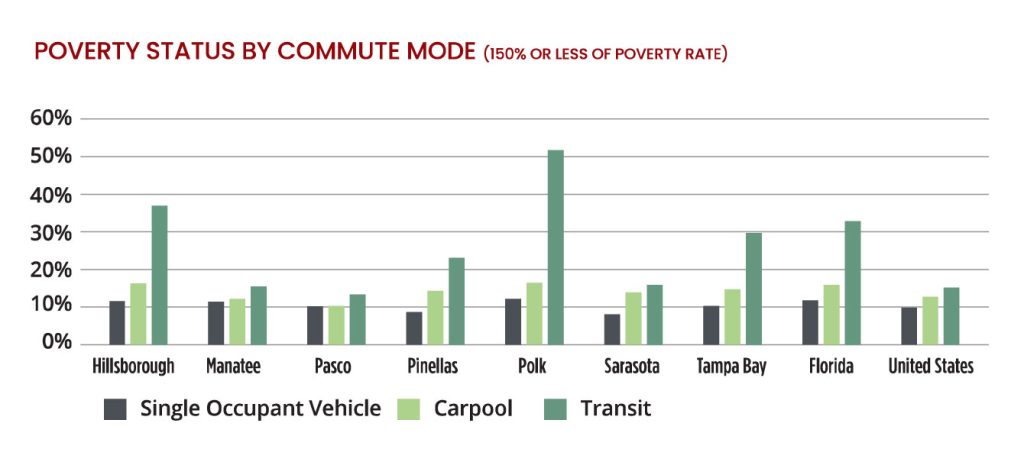HIGHLIGHTS
- Transit commuters are far less prevalent in Tampa Bay vis-a-vis the nation as a whole, with only 1.1% of workers using transit to get to work
- Tampa Bay transit riders are more likely to be black or African American than the typical commuter.
- There are several penalties- negative outcomes- associated with Tampa Bay transit commutes: Longer duration commutes, a greater likelihood of having a commute of 1+ hour or more, lower median earnings, and a higher risk of poverty.
Tampa Bay’s Regional Competitiveness Report metrics for transit– Transit Ridership per Capita (demand) and Transit Vehicle Revenue per Capita (supply) have resided at the bottom of the rankings in all three editions of the report. Yet while Tampa Bay workers and residents have significantly less access to transit service than their counterparts in the comparison areas, transit remains an integral part of many residents commute to work. The tables and charts in this deeper dive attempt to paint a picture of the Tampa Bay transit commuter, providing county desegregation where possible (and for which Tampa Bay is the aggregate of the counties listed) in comparisons to the state and nation for context.
Source: Census Bureau, American Community Survey 2018 1-Year Estimates, S0802
